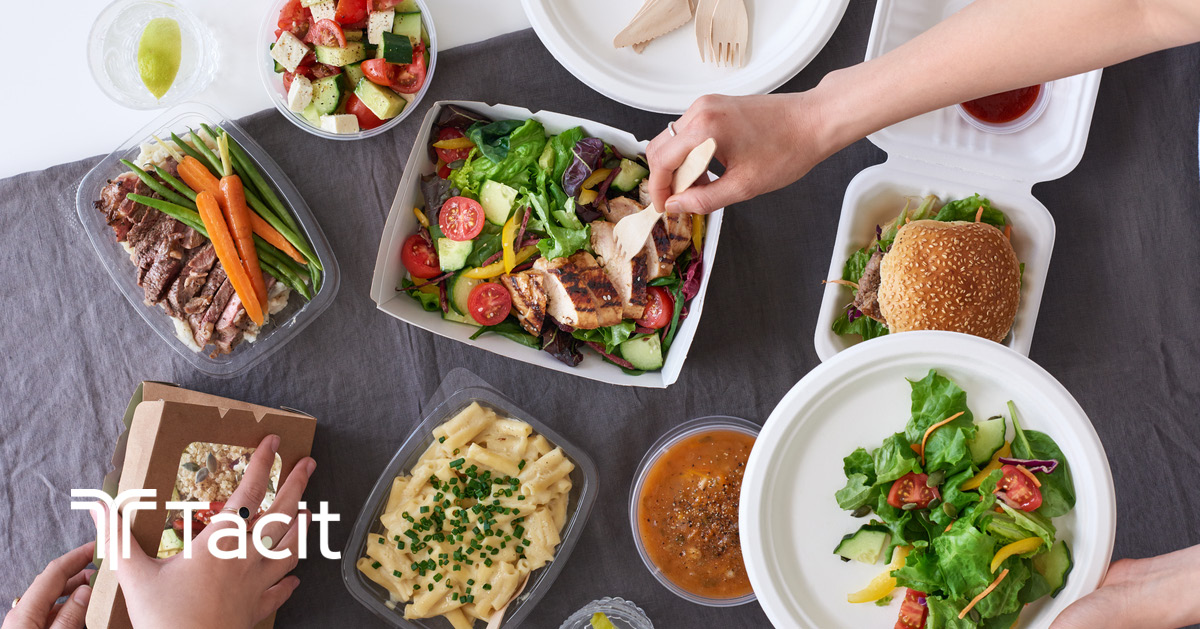
14 Jan Should I Use a Third-Party Delivery Service or Create My Own? Here’s What to Consider
Delivery is a must-have in the modern restaurant industry. As explained by QSR Magazine, outsourcing third-party food delivery comes with significant advantages compared to traditional, dine-in and takeout options, and millennials are rapidly demanding more delivery options from their favored restaurants.
“Driven by consumers’ growing appetites for convenience and the rise of third-party players like Uber Eats, Postmates, and Grubhub, foodservice delivery has become a ubiquitous element of modern life—and one that shows no signs of slowing. [Meanwhile,] restaurants’ delivery sales are projected to grow at more than three times the rate of on-premises revenue through 2023.”
Unfortunately, the path between third-party delivery and building an in-house service diverges quickly, and restaurateurs are left with inefficient processes, substandard quality of delivery, and more. Even when working with established service aggregators, opportunities for error become hassles. However, taking a few considerations in creating a delivery program can go a long way in reducing its cost and risks.
What Can Go Wrong With In-House Delivery?
In-house delivery sounds simple enough. Yet, it is laden with key risks, including:
- Higher labor costs from hiring delivery drivers.
- Poor collaboration between drivers and kitchen staff, leading to stale food and delays.
- Increased insurance costs deriving from delivery risks.
- Inability to track costs of in-house delivery versus dine-in options.
Similar risks exist within third-party restaurant delivery, such as higher commission charges, added fees, delays in delivery, and poor integration between the POS and third-party systems. It really is a comparison of apples to apples.
The Benefits of Third-Party Delivery Service Versus In-House Delivery
This is the simplest part of the entire topic. A sole venture into either third-party delivery or in-house delivery limits your market reach. Instead of trying to decide between the two, set a goal to offer both in-house delivery and third-party delivery. Obviously, the costs of an in-house program are highest at its beginning, so it may be wise to invest in third-party delivery service first. There will always be time to build an in-house program later. Still, restaurateurs could successfully build an in-house program, provided they know how to secure, please, keep, and attract current and new customers.
How to Make the Decision With an Eye on the Prize
Restaurateurs should follow these tips to make a decision between in-house delivery and third-party services:
- Focus on the customer experience, reports QSR Automation. Excellent restaurant customer experience is a continuous process. Restaurateurs must work through social media, branded apps, and third-party services to connect with more customers.
- Maintain appropriate commitments. For example, consider adding third-party delivery service to your existing in-house delivery. Never commit to a single service or solution in perpetuity. Remember that things change in all businesses.
- Track delivery data for existing partnerships. If no partnerships are in place, review available data regarding ROI and implementation costs, as well as risks. In fact, blind following of third-party delivery service providers will lead to “Tablet Hell,” unless you have a partner like Tacit to help integrate third-party delivery into the POS, making restaurant life much worse and more stressful.
- Benchmark operational efficiency. Kitchen efficiency depends on the harmonized activities and collaboration among your workforce. Benchmarking provides a measure of current efficiency that can be used for comparison in the future.
- Listen to your customers. Going back to the main priority—customer service—let your customers help with the decision. Customers want the option to order from both a branded app or website, as well as third-party services. If planning to launch delivery, poll your followers on social media. This is an excellent way to ensure your chosen path is well received.
Leverage the Delivery Array to Grow Profitability
There is no one-size-fits-all option for delivery in today’s world. The newest companies are constantly changing the game, and with the record-breaking growth of online food delivery, restaurateurs cannot ignore the issue any longer. The simple truth is this; your restaurant needs efficient, traceable, and successful delivery. There is not a backup plan. Request a consultation with Tacit online to get started on your delivery service implementation, regardless of its in-house or outsourced nature, today.

Pingback:Why Restaurant Food Delivery in Non-Pizza Food Industry Is Big Business
Posted at 13:07h, 04 August[…] two apps at least three times per month. According to the study, published by U.S. Foods, 54% of third-party delivery service users start with the restaurant in mind, looking for it on an apt first. The other 46% start by […]
Pingback:2020 Third-Party Restaurant Delivery Trends
Posted at 13:22h, 04 August[…] of convenience and faster service for consumers. Unfortunately, the debate still rages over whether third-party delivery or in-house delivery is the best option, and restaurateurs are struggling to keep with demand for more diverse and […]
Pingback:Digital Restaurant Dine-In Trends
Posted at 13:23h, 04 August[…] With the right set of tools and integration, the notions that rendered past third-party partnerships useless have now offered a way to increase revenue and still take advantage of aggregators. […]